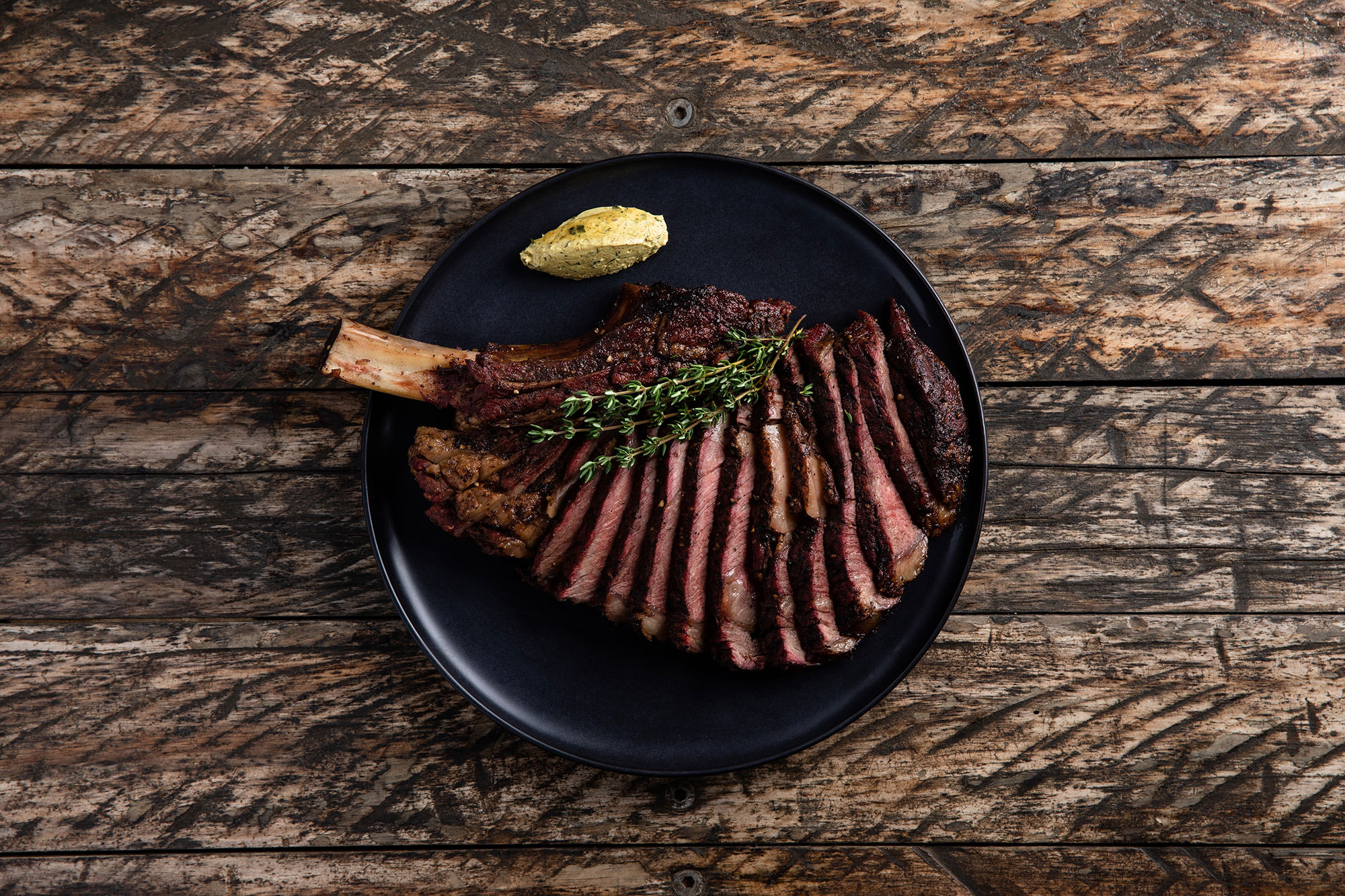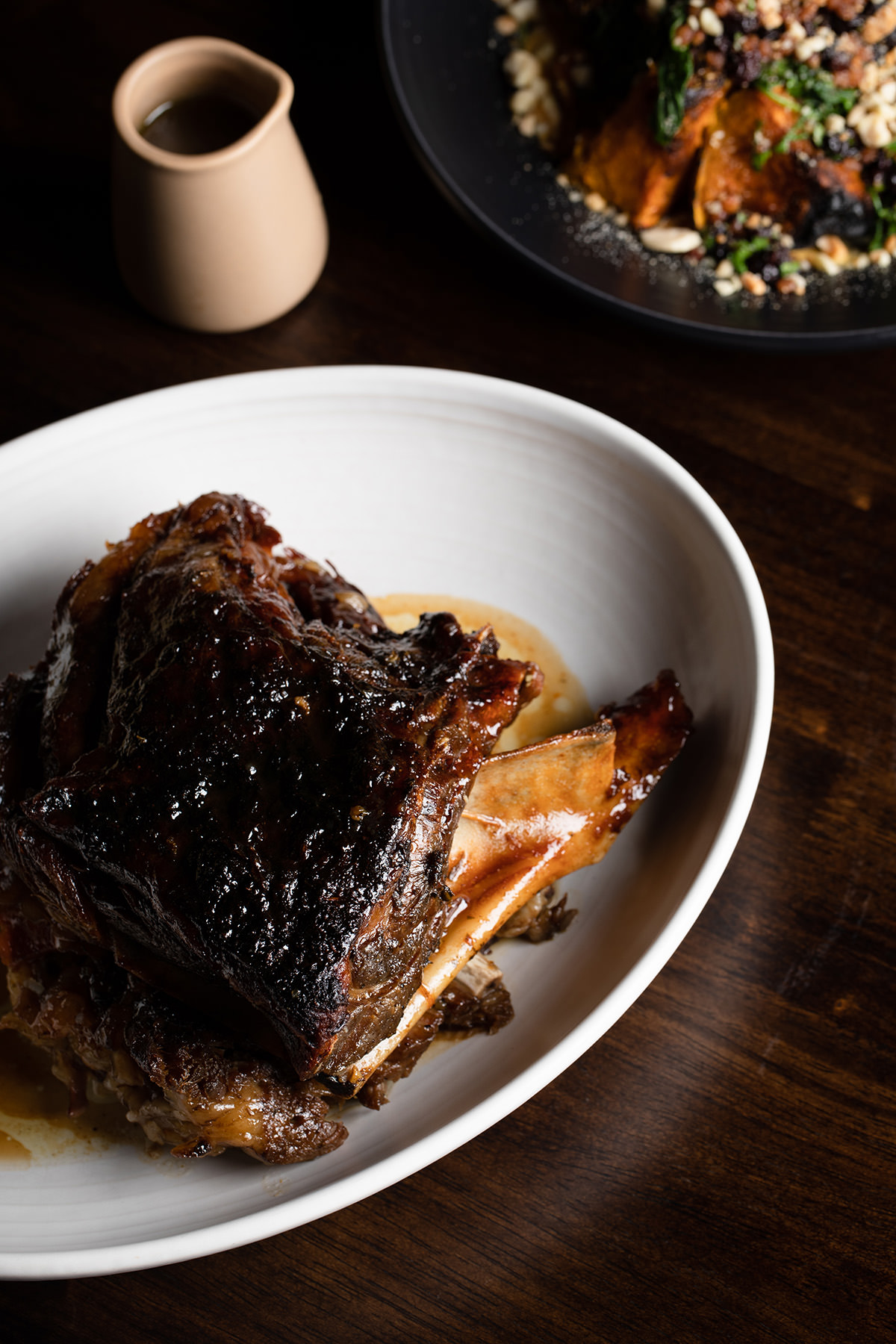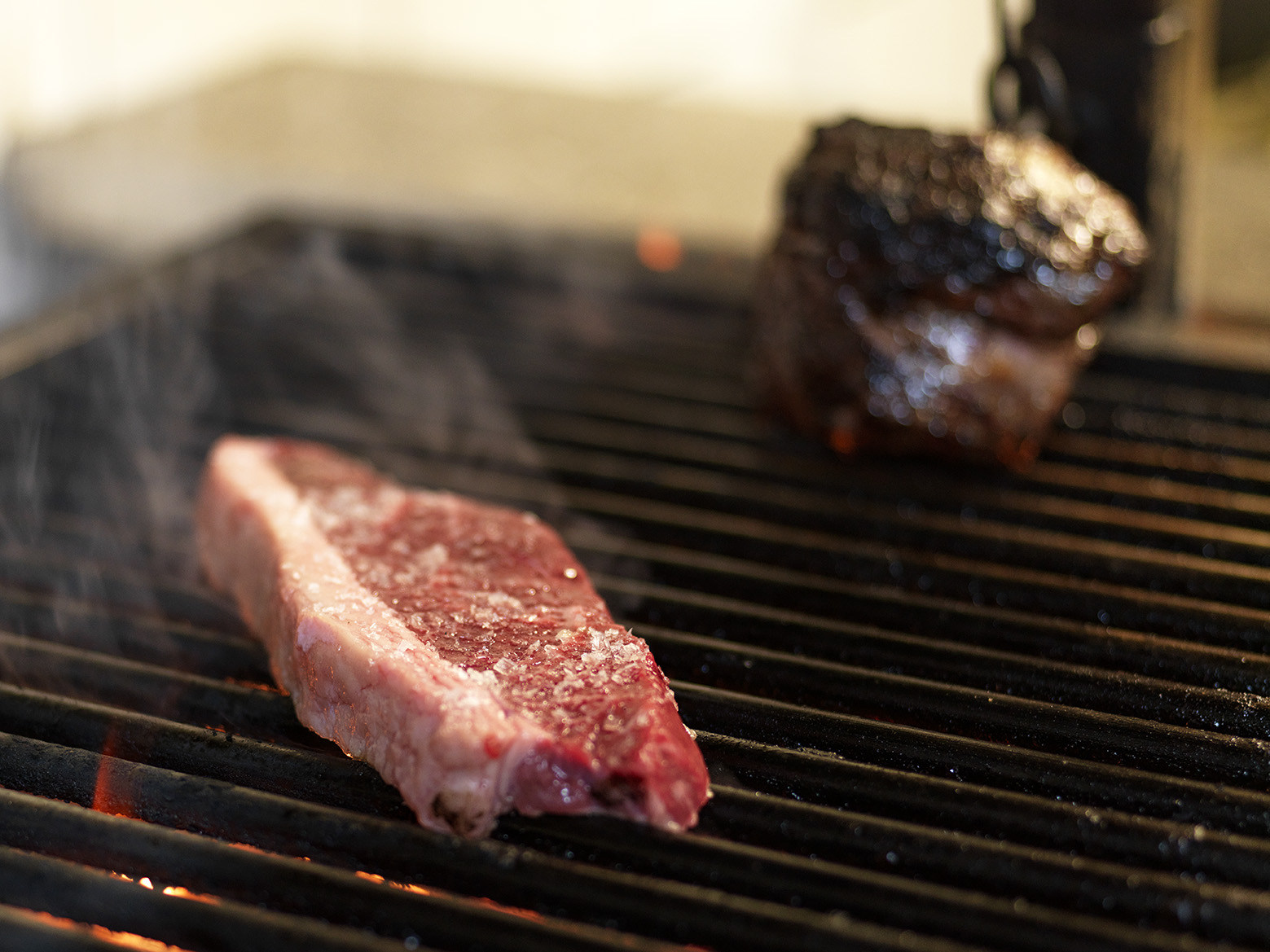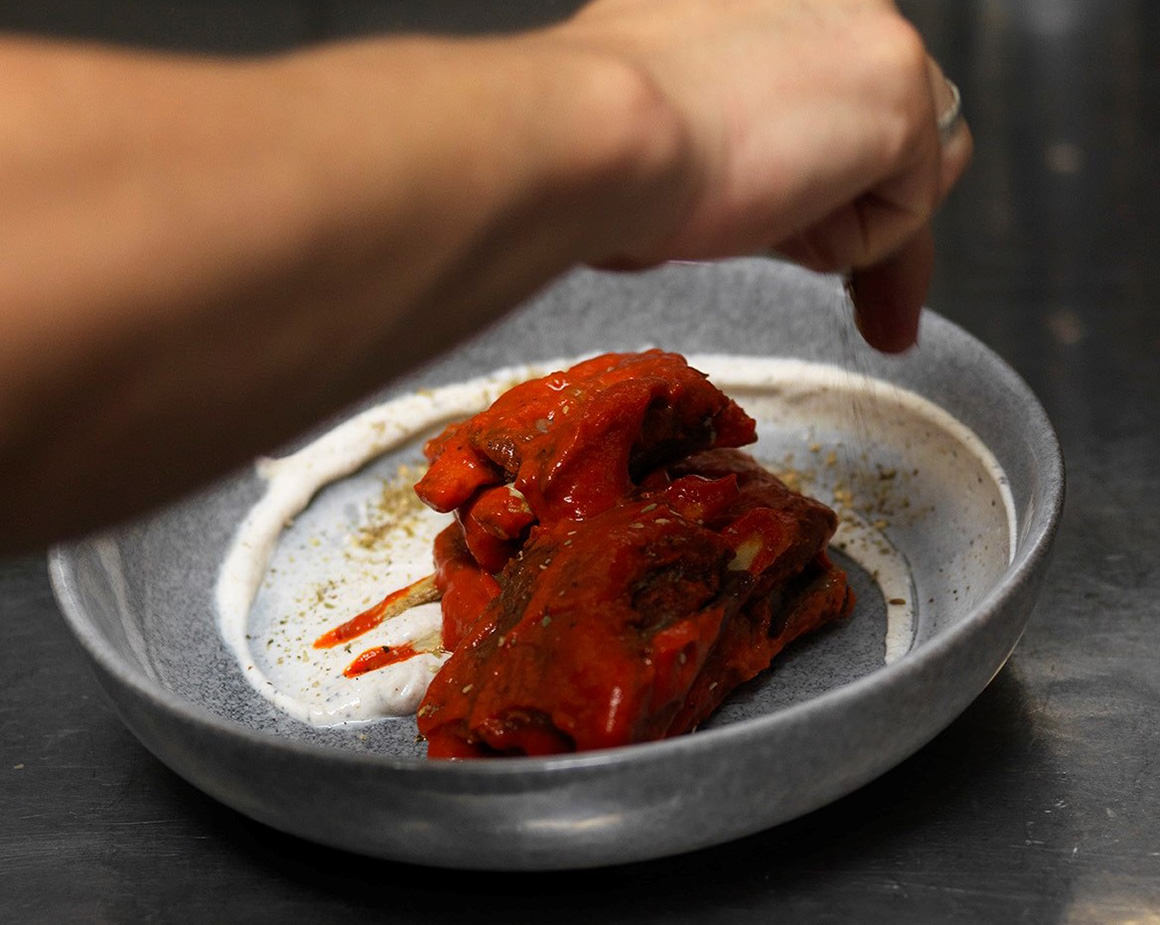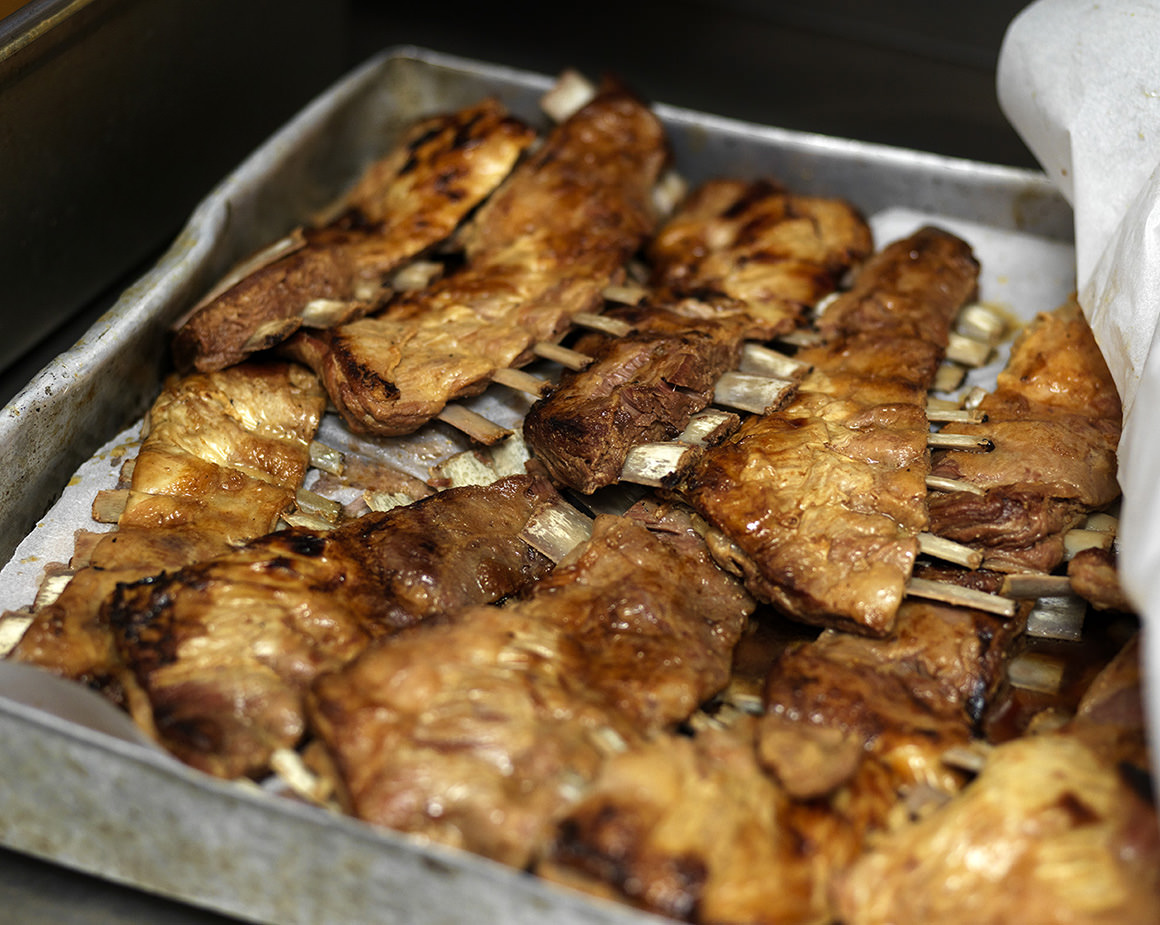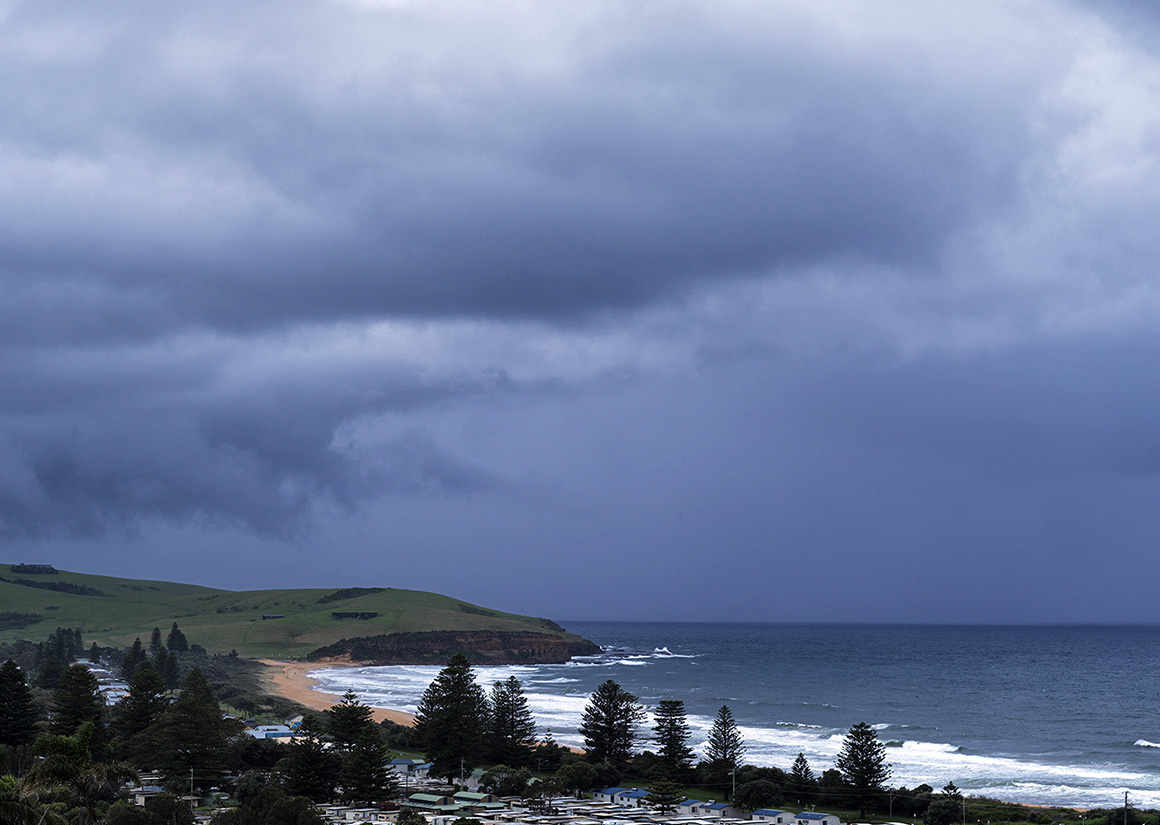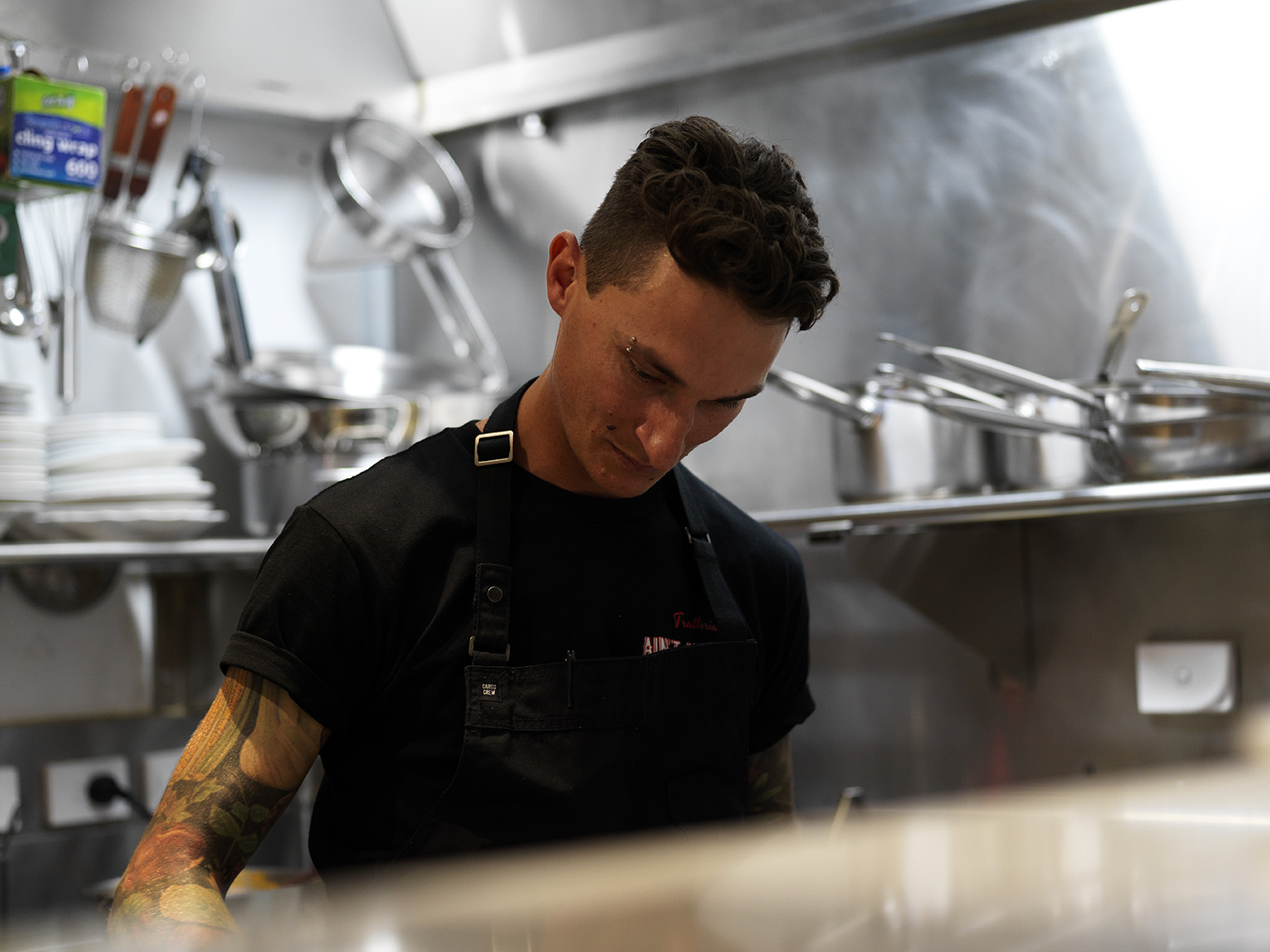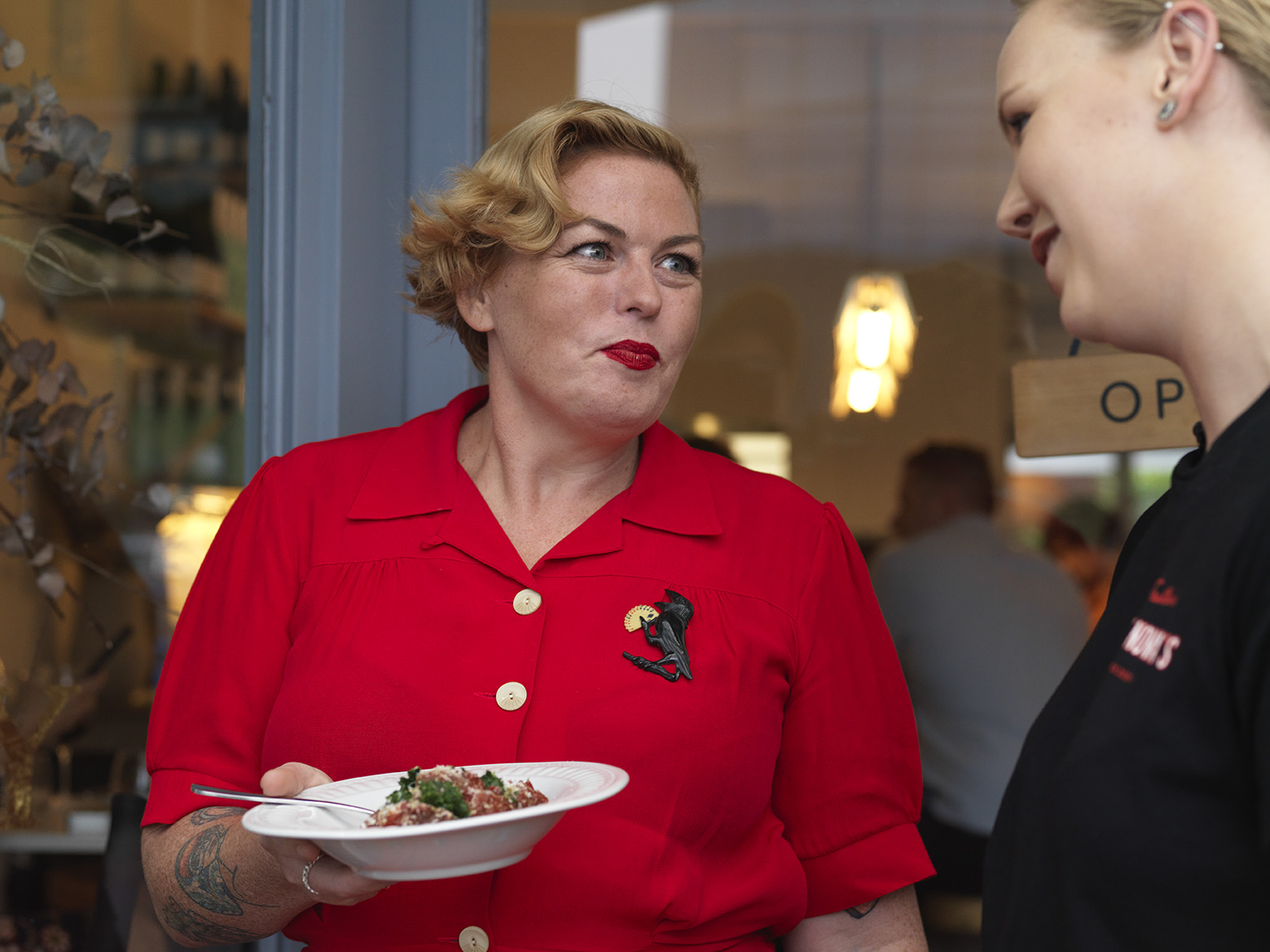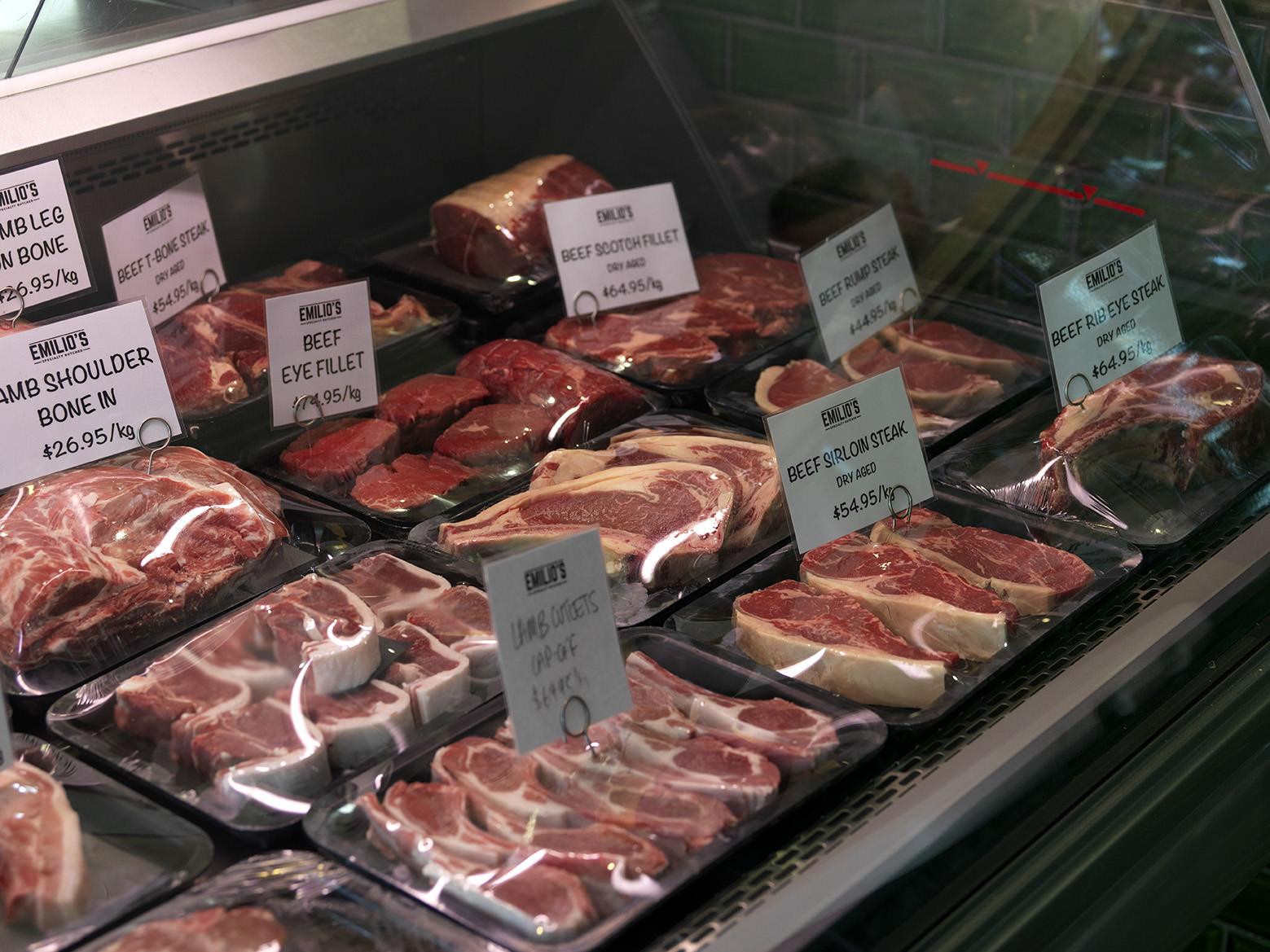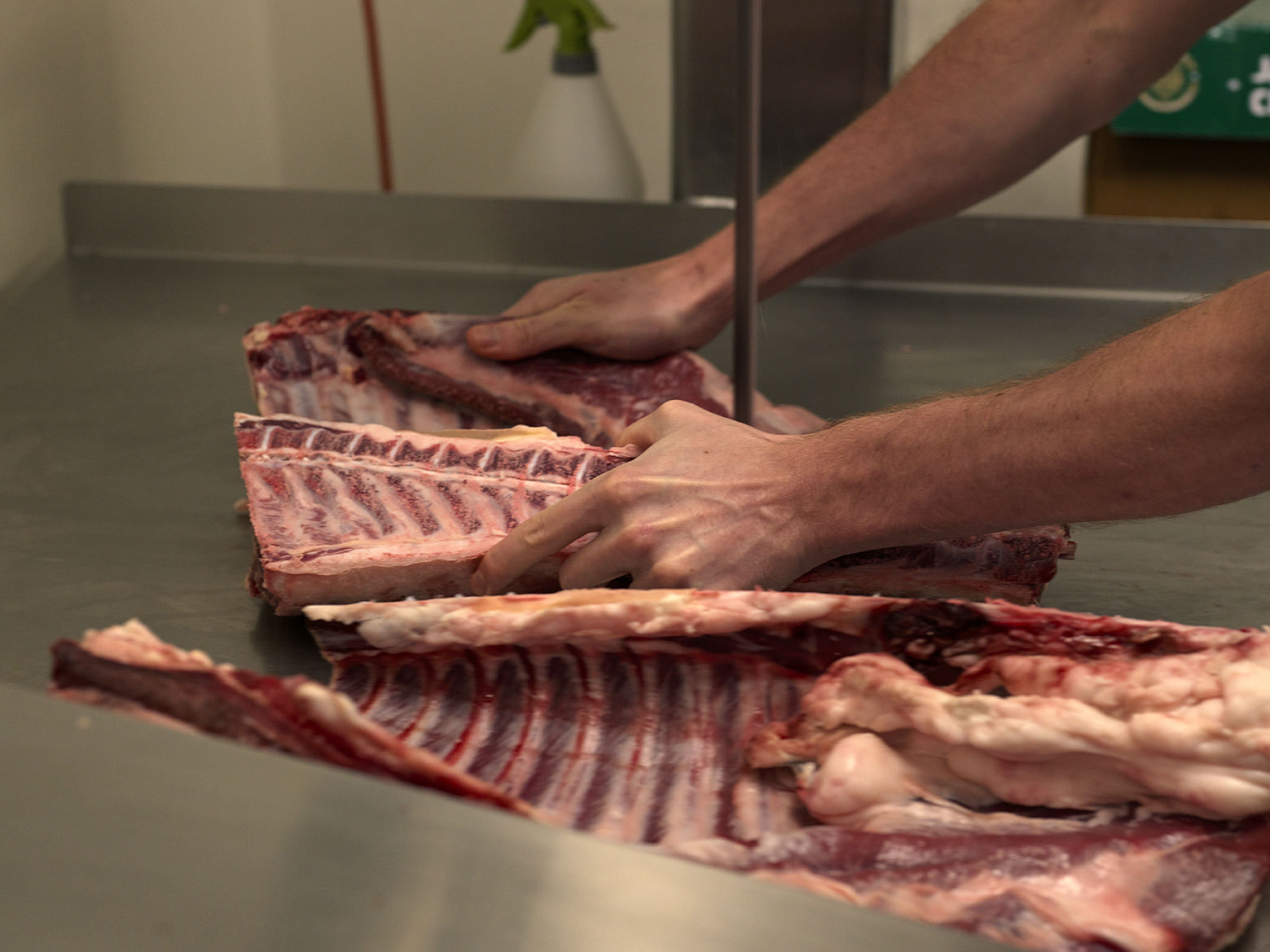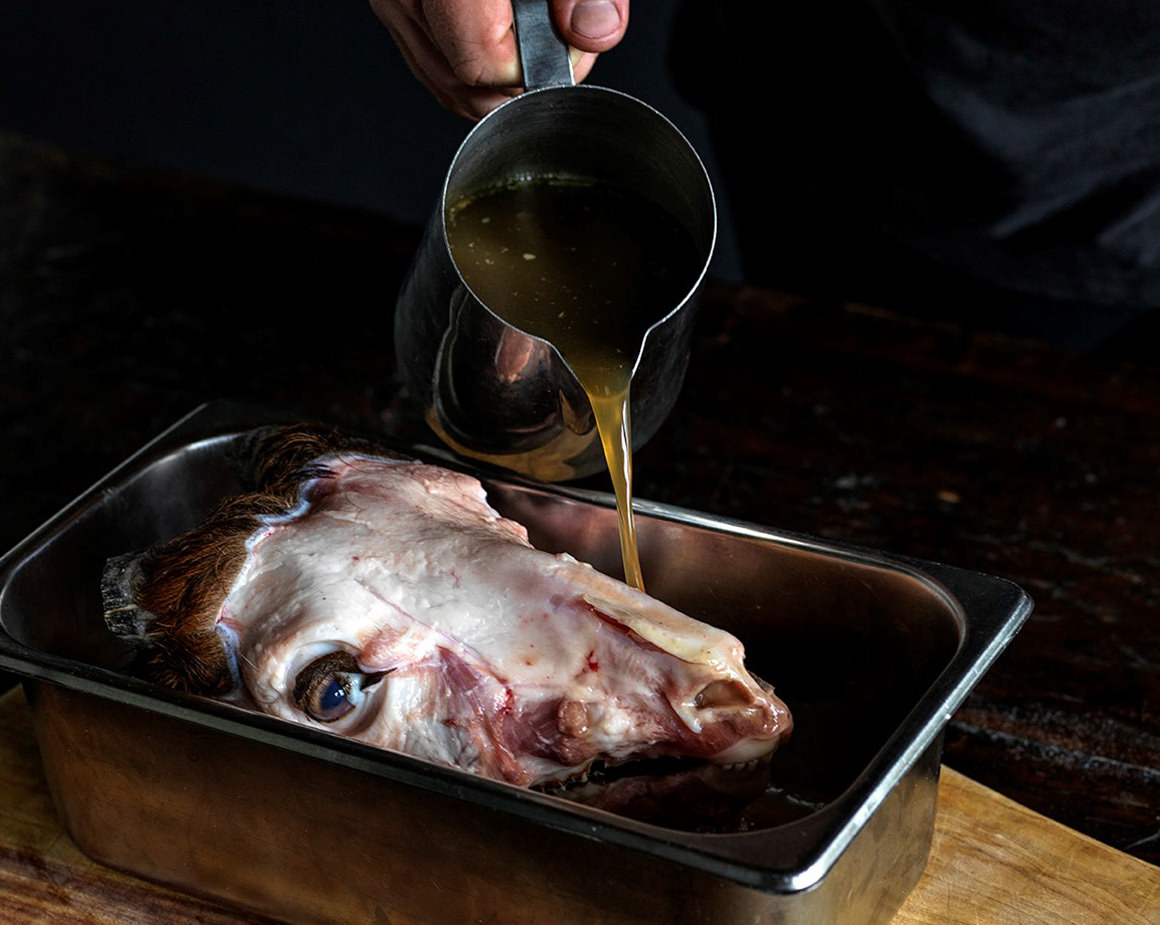Editor’s
Letter

MJ with the team from Emilio’s Specialty Butcher in Rozelle.
Welcome to Issue 14 in which we explore the theme of DIY – doing it yourself.
In People Places Plates, Pat Nourse profiles self taught cook and the king of food trucks in Australia, Raph Rashid. When Raph started his food truck business in 2009 he had no experience and in fact had never even driven a manual car, let alone a truck! Now with six food trucks and two venues, Raph’s story is one of determination, drive and doing it yourself.
Mark Best explores different paddock to plate models in his Spotlight On section – where the venues are located on-farm and utilise their own beef or lamb on the menu. The ultimate in DIY, the four venues discuss the challenges and opportunities of producing their own livestock for the menu.
This issue, What’s Good in the Hood does the NSW South Coast and despite the torrential, record-breaking rainfall, Myffy Rigby uncovers some absolute gems of coastal dining. There are lots of DIY inspired stories from a half eaten pie on a fence prompting a father and son to open their own pie shop in Ulladulla; to a Merimbula girl recognising the need for a decent watering hole in her hometown. Hit the road and discover some incredible dining along the beautiful NSW coastline.
Our Cut Two Ways for this issue is Goat – and it sure does shine in the hands of two of our favourite chefs Nick Stanton and Alex Prichard with goat from The Gourmet Goat Lady. Our featured butcher is Emilio’s Speciality Butcher – two butchers who decided to do it their own way by opening a butchery committed to ethical and sustainable meat.
Finally, Young Guns features one of the hottest young chef talents in the business – Rosheen Kaul from Etta in Melbourne. We talk to Rosheen about the challenges of her first head chef role and her DIY journey of developing her style of food through cultural and family connections, historians and anthropology.
The stories, photos and videos in this issue are brimming with inspiration, ideas and incredible people who have found a way to do it their way – and we wouldn’t have it any other way.
Mary-Jane Morse
Meat & Livestock Australia
[email protected]
@_raremedium
Copyright: this publication is published by Meat & Livestock Australia Limited ABN 39 081 678 364 (MLA).






















